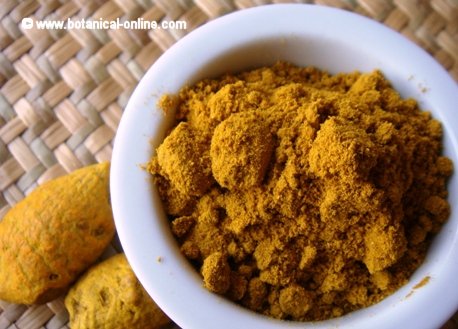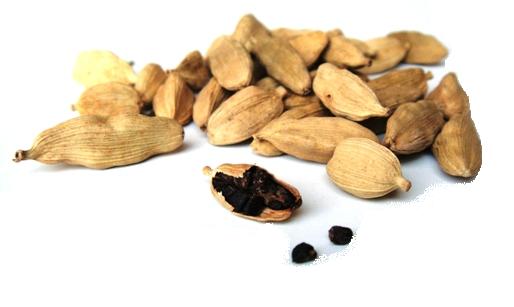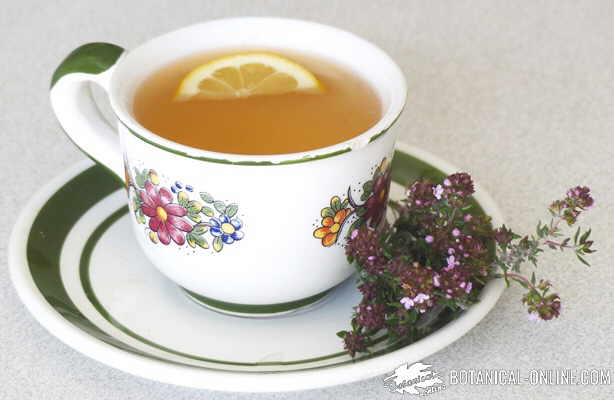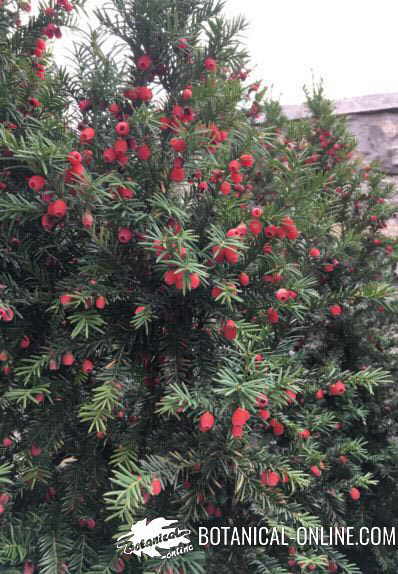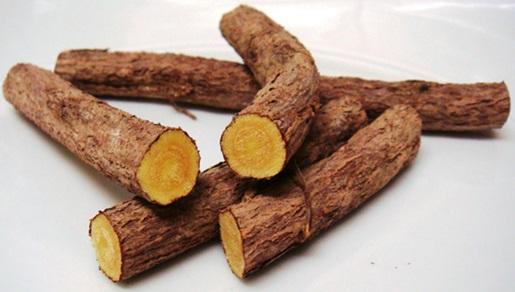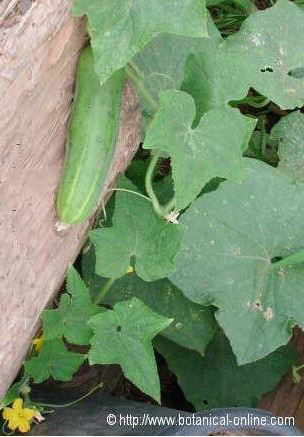Contents
- 1 CHARACTERISTICS OF HOLLY (Ilex aquifolium L.)
- 1.1 Description of holly plant
- 1.2 Composition: Active components of holly
- 1.3 MEDICINAL PROPERTIES OF HOLLY
- 1.4 Internal use preparations of holly
- 1.5 Characteristics of holly wood
- 1.6 Is holly a dangerous medicinal plant?
- 1.7 Curiosities of holly
- 1.8 Holly, a protected species in many places
- 1.9 Other species of Holly
CHARACTERISTICS OF HOLLY (Ilex aquifolium L.)
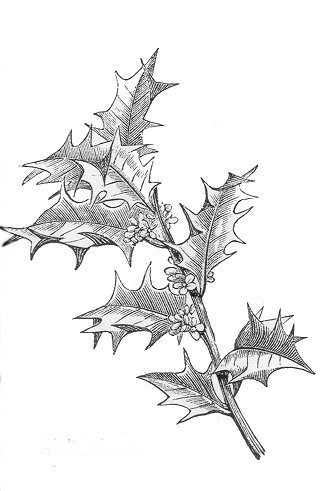
Common English noun: Holly, Christmas Holly, Common Holly, English Holly
Scientific noun: Ilex aquifolium L.
Family. Holly family – Aquifoliaceae
Habitat: Beech and oak forests and hedges of humid climates.
Description of holly plant
Dioecious tree of the Holly family – Aquifoliaceae, usually 10 m tall (It can attain 25 m).
Erect stems with smooth bark, light grey, and bright green branches.
Alternate wavy leaves, elliptical or ovate, bright green, coriaceous with strong spines (Specially those near the ground; superior ones sometimes spineless)
Flowers in different trees, the female ones with four petals, white-greenish.
Fruits till 12 mm in diameter. They are red berries when mature.
Composition: Active components of holly
- Theobromin
- Ursolic and Ilexic acid
- Tannins
- Rutin
- Gum
- Ilexantine
- Ilicin
MEDICINAL PROPERTIES OF HOLLY
Internal use preparations of holly
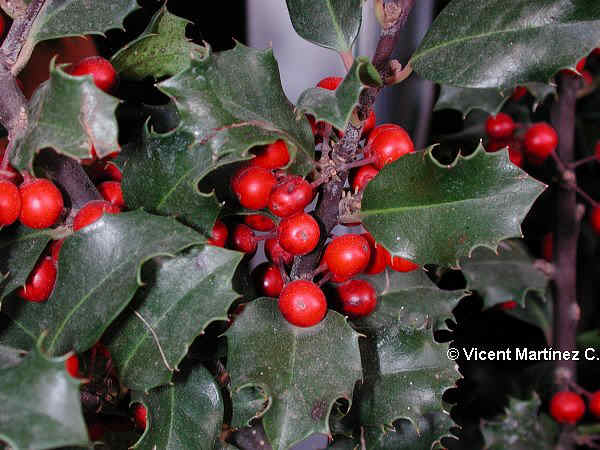
Holly plant with fruits
- Diuretic: For their diuretic properties, the leaves are used to eliminate spare liquid of the organism in illnesses like rheumatism, gout or dropsy. (Boil during 10 minutes 4 spoonfuls of crumbled dry leaves. Take 3 cups a day.) (Decoction during half hour of 3 spoonfuls of dry roots for a liter of water. Drink a couple of cups daily)
- Febrifuge: This same decoction has febrifuge properties so it is used to eliminate fever in processes like flu, intermittent fevers, bronchitis, etc.)
- Laxative and purgative: To clean the bowels, in case of constipation, carry out a maceration of dry bark in cold water during 12 hours. Drink 2 cups a day between the two main foods. The fruits have also been traditionally used as purgative, but, given their toxicity, they should be avoided completely.
- Tranquilizer: The infusions of this plant exercise a tranquilizing function and they have been used in cases of hysteria and epilepsy. Infusion during 10 minutes of 2 spoonfuls of bark dry in a couple of glasses of water. Drink two cups a day.
Characteristics of holly wood
Holly has a very resistant wood to humidity, so that reason it has been used in the field for constructions that tolerate the rottenness. It is habitual its use for stakes in fences
A sticky substance is made from the bark that has been used to trap birds.
It has also been used a lot to make engravings or to make objects in turnery.
Holly woods, due to the shade that reigns in their interior, have been habitual refuge of livestock in summer. This has caused their transformation, since, to let cattle go inside, shepherds have cut the biggest trees. This king of activity has formed secondary holly woods by sprouting many thinner and less vigorous samples.
Holly constitutes, together with mistletoe, poinsettia and moss, one of the most important symbols in Christmas. (See more information about Christmas plants)
Is holly a dangerous medicinal plant?
The berries of holly are very toxic. In high proportions their ingestion can be deathly.
Never use during the pregnancy, nursing or with children.
Curiosities of holly
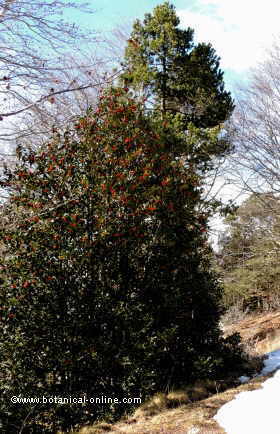
There are approximately about 400 species in holly family (Ilex) in the entire world, being the regions near to the tropics where they are more abundant. Holly is a very old tree. Before the glaciation, it practically occupied all Europe, when it had a warmer climate.
Then, with the arrival of cold times, it was able to adapt to colder atmospheres so that today, besides finding it in humid Mediterranean areas, it grows fundamentally in Atlantic temperate areas and in the mountains of the north of Africa. It doesn’t like very high and cold areas or dry ones. It prefers acid soils. (See cultivation of holly)
Holly woods can be found in pure state in a few reduced territories with a special climate (plenty of water and little sun). Hollies usually appear in woods of pines or oaks, where they generally grow as isolated samples. Pure holly woods are characterized to form a very dense vegetation that does not allow light to go in. They form a very dense vegetation in whose interior very few plants grow.
Holly, a protected species in many places
Unfortunately, not many woods like this exist today, due to the man’s action that has used their wood for different purposes. This has made the species to diminished in such a way that today it has been protected in many countries.
- It is very important that, when we buy a branch plenty of their beautiful fruits in Christmas, we know for sure it belongs to a cultivated species.
Other species of Holly
- Japanese holly (Ilex crenata) It doesn’t usually overcome 4 meters high. It possesses black brilliant fruits. Its wood is used for hedges, especially those than can be cut in different forms.
- American holly (Ilex opaca) Up to 9 meters, it is characterized by the yellowish color of the back of their leaves. It is a holly type that prefers the sun to the shade.
- Holly of Perni (Ilex pernyi) Discovered by the French missionary Pol Perny, it can attain 9 meters high. It is characterized by its typical rhomboid leaves and its oval red fruits.
- Holly of Yupon or tea of Caroline (Ilex vomitoria) it Grows in the south of the United States and north of Mexico. Very used in hedges to carry out vegetable screens for wind protection. Its leaves are used by the native Indians as purgative.
- Mate (Ilex paraguariensis) The leaves of this tree are used to elaborate the mate infusion, a stimulating drink, rich in caffeine, with less astringent properties that coffee. Very used in South American countries.
![]() More information on medicinal plants.
More information on medicinal plants.

